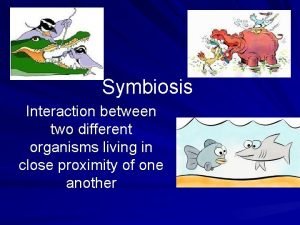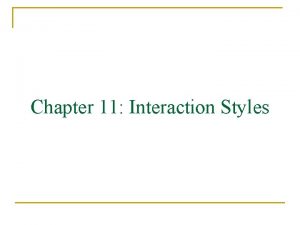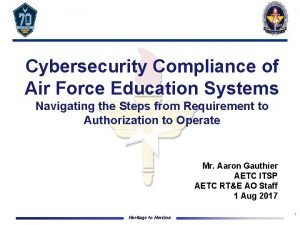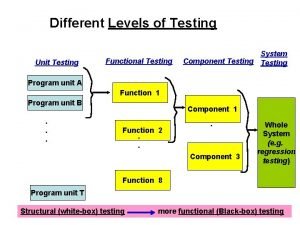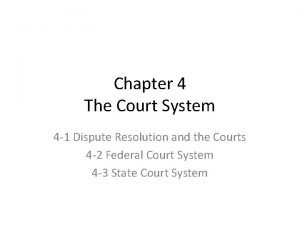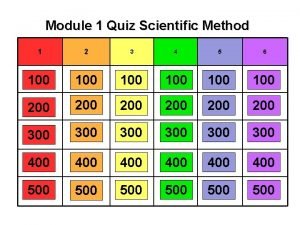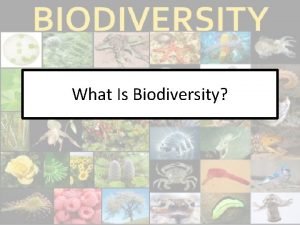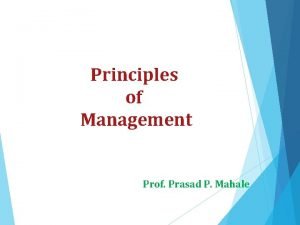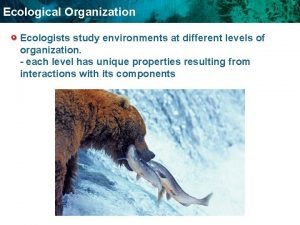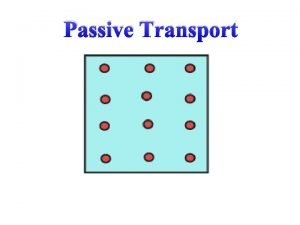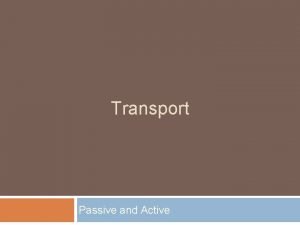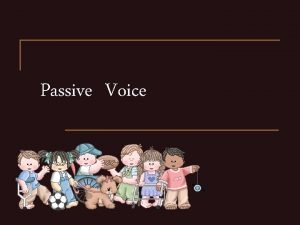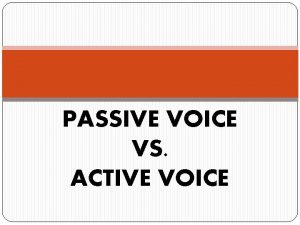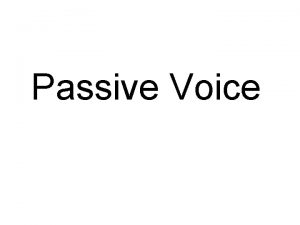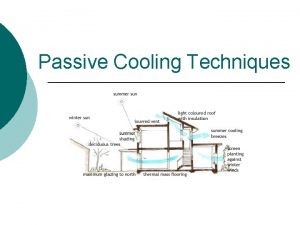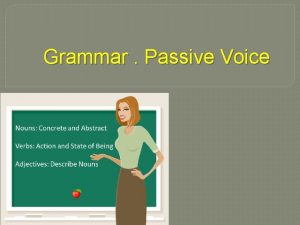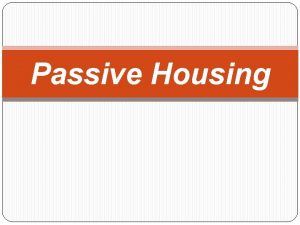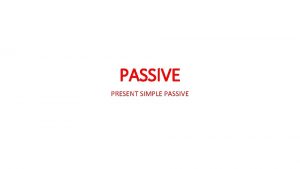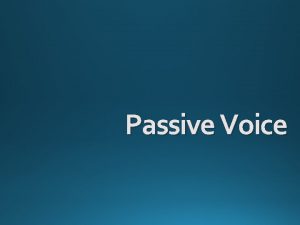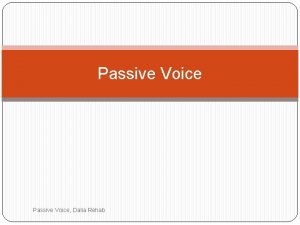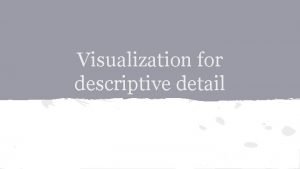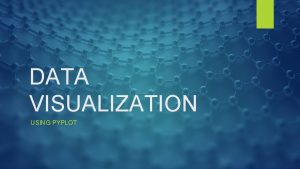Different Levels of Interaction Passive only visualization Reactive




















- Slides: 20


Different Levels of Interaction : -Passive : only visualization -Reactive : limited inetraction ( e. g. , scroll pane functionality). -Proactive : choose a path or make selections (e. g. button) -Reciprocal: corresponds to user authoring of information

Interaction Models : -Navigational: choose to dicide where to go next -Design: user can modify the visual style of the presentation (e. g. colors) -Movie: User can control the global time (e. g. VCR capabilities)

• Tradionally multimedia presentations did not have that much logic: -Virtual visit to a museum, DVD menus …… • Real – time interactive systems: -Virtual Reality worlds, games • Application logic needs of a programming language (if, case, goto, …. . ) -Compiled languages C, C++ -Virtual Machine: Java -WWW, MPEG-7, Director, Scripting


Video Description Video => Analysis -> Description -> Applications Scheme of audiovisual applications • Dublin core: the semantic indexing schema for video content description. • MPEG-7: the future standard tools will enable to define the semantic schemas for description of the audiovisual information. *Our video modeling for composing multimedia document.

Methodology • Specification of a modeling for the description of video content: – Multi-level structuration, – temporal and spatial relations, – actions interactive on the video elements. • Specification in XML • Experimentation in Video



Multi-level Structuration Raw video Video <!--XML schema for the description of Video. Content--> Occ. 1 Occ. 2 Occ. 3 Occ. 4 Structure • Video Content <!ELEMENT Video. Content – Structural Description (Meta. Info, Media. Info, Summary, Structure, Semantic, Thesaurus)> Irene Video Content Description Semantic Nabil Semantic Researcher Thesaurus – Semantic Description <!ELEMENT Structure (Sequence+, Relation? )> – Thesaurus <!ELEMENT Semantic (Video. Object*, Event. Semantics*)> <!ELEMENT Thesaurus (Reference. Dictionary*, User. Dictionary*)>

Video Structure Description • Motivation: for composition, the basis is to have the Structure description level. • Semantic and Thesaurus are more necessary for retrieval applications or as a support for structuration level. *First step is Structure description

High Level Description Video Structure • Video structure Structure --> – Shots <!--XML schema for the description high level Sequences <!ELEMENT Structure (Sequence+, Relation? )> <!ELEMENT Sequence (Scene+, Relation? )> – Scenes – Sequences (Shot+, Event*, Relation? )> Scenes <!ELEMENT Scene <!ELEMENT Shots Video (Transition? , Event*, Occurrence*, Background? , Relation? )>

Shot Content Description • Shot Content <!-- XML Shot Description --> Semantic – Transition (Transition? , Event*, Occurrence*, <!ELEMENT Shot – Event Index Background? , Relation? ) > <!ELEMENT Transition EMPTY > – Spatial. Layout EMPTY> <!ELEMENT Event Trans. Event Spatial. Layout Camera. Work – Occurrence Background – Background <!ELEMENT Background (Region+)> * Reference <!ELEMENT Occurrence (Region+, Trajectory? , Occurrence*) > <!ELEMENT Spatial. Layout (2 DBString. DS+) > – Camerawork <!ELEMENT Camera. Work (Camera. Motion? ) >

Occurrence Content Description • Occurrence Content <!ELEMENT Occurrence (Trajectory*, Region+, – Trajectory <!-- XML Occurrence description --> Occurrence*)> – Regions Trajectory Region Occurrence • Contour <!ELEMENT Region (Contour+, Color*, Texture*, • Color Centroid, Region*)> Contour Color <!ELEMENT Trajectory …> <!ELEMENT Contour … > Texture Centroid Region • Texture <!ELEMENT Color … > <!ELEMENT Texture … > • Regions <!ELEMENT Centroid … > – Occurrences <!ELEMENT Region … >

Experimentation of the model in Madeus - Video. Madeus

Madeus Architecture Editor/Presentation Tools EXECUTION View TIME LINE View HIERARCHICAL View VIDEO STRUCTURED View . . . MODEL MANAGEMENT PARSERS LOGIC STRUCTURATION TEMPORAL SAVE Madeus document STRUCTURATION EVENT MANAGEMENT SPATIAL MADEUS STRUCTURATION OUTILS JAVA Xerces JMF • To extend Madeus to Video. Madeus, video content description is handled both in composition and in presentation parts.

Madeus Document Model <Madeus> • Madeus Document Structured document organized according to the <Content> … </Content> Content dimensions: Logical, temporal, spatial. Actor Temporal Madeus Document Logical Spatial Content <Actor>. . . </Actor> Internal Document <Temporal>. . . </Temporal> <Spatial>. . . </Spatial> </Madeus> • Actor Content that describes the content information of the Temporal document • Spatial Actor that defines how this basic information in the content part is used in the document (style information, link, etc. )

Relations • Temporal relations (Allen extension) – meets, starts, equals, during, overlaps, parmin, etc. • Spatial relations – left_align, right_align, center_v, center_h, <Temporal> … <Relations> top_align, bottom_align, etc. <start Interval 1= « a » Interval 2= « b » /> <meet Interval 1= « b » Interval 2= « d » /> … <Relations> d </Temporal> <Spatial> … <Relations> <left-align Region 1= « b » Region 2= « d » /> … <Relations> </Spatial>

Overview of Video. Madeus Editing and Presentation Tools Execution View Video edition View " Element Management Structure View " Semantic View " Thesaurus View Synchronization Management Behavior Management Hyperlink "Follow-up "Erase "Display, etc. . . " Edit "Play "Search Temporal " " Spatial " Requested descriptions Modified description Data Management XML Description of video content Modify Parser Index on video Video Internal Structure (MODEL)

Video. Madeus document <Madeus> <Content> . . . <Video. Content. DS> . . . <Scene ID = « My. Scene » . . . >. . . </Scene> </Video. Content. DS> </Content> <Actor>. . . <Video. Element ID= «Scene. Video» Content = «My. Scene » . . . >. . . </Video. Element> </Actor> <Temporal> <Interval ID=“Scence. Int” Actor=“Scene. Video” Duration=“. . . ” … /> <Relations>. . . </Relations> </Temporal> <Spatial> <Region ID=“Scence. Reg” Actor=“Scene. Video” Height =“ 288” Width=“ 352” … /> <Relations>. . . </Relations> </Spatial> </Madeus>
 Parasitism
Parasitism Menu selection interaction styles
Menu selection interaction styles Costas level 2 questions
Costas level 2 questions Passive interaction
Passive interaction Cpcon air force
Cpcon air force Cisco unity connection administration
Cisco unity connection administration Leave only footprints take only photos
Leave only footprints take only photos Different sponsorship levels
Different sponsorship levels Neighborhood integration testing
Neighborhood integration testing Different court levels
Different court levels Three redwood trees are kept at different humidity levels
Three redwood trees are kept at different humidity levels What is biodiverstiy
What is biodiverstiy Lower level management
Lower level management What different levels of organization do ecologists study
What different levels of organization do ecologists study Why do different polymers have different properties?
Why do different polymers have different properties? Technicolor test
Technicolor test Sound will travel at different speeds in different mediums.
Sound will travel at different speeds in different mediums. Lrefraction
Lrefraction What is cultural relativism
What is cultural relativism Different angle different story
Different angle different story Acids and bases song lyrics
Acids and bases song lyrics
